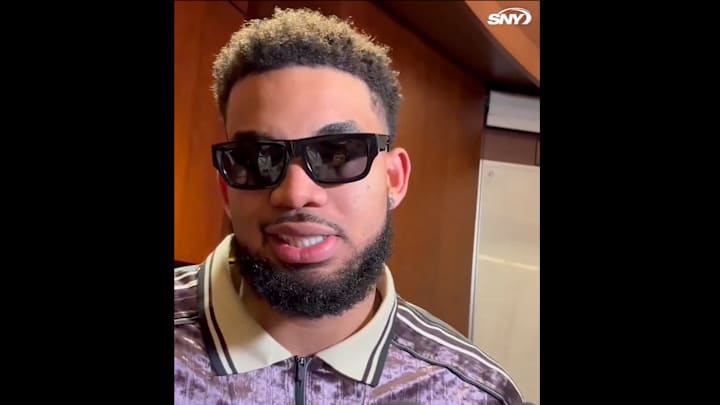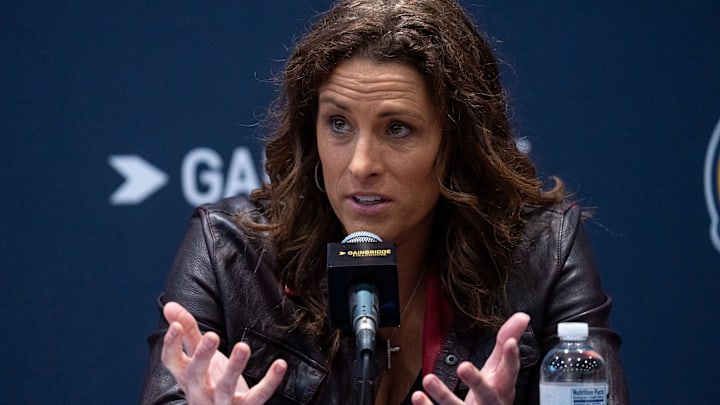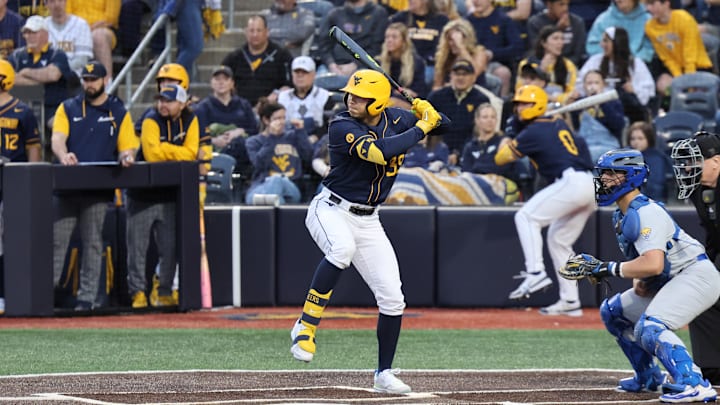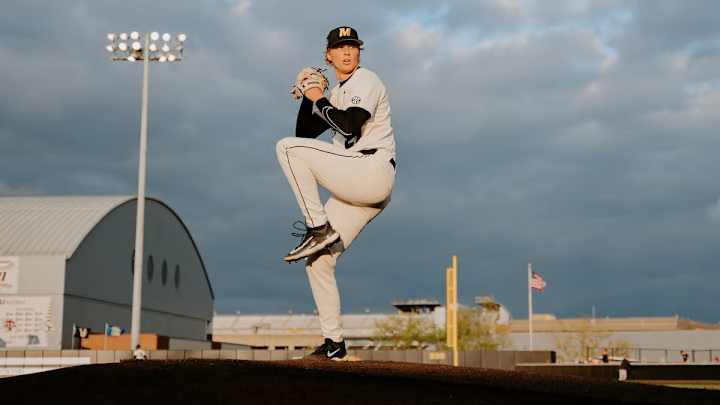The Los Angeles Chargers added some necessary playmaking and explosiveness to their offense in Thursday’s first round by drafting North Carolina running back Omarion Hampton . They have nine picks remaining over the final six rounds and more needs to fill. Those needs include defensive tackle, receiver, tight end, interior offensive line, edge rusher and cornerback.
Here are the top players remaining on my Chargers-specific big board. Day 2 Will Johnson, CB, Michigan Johnson played for Harbaugh for two seasons in 2022 and 2023. He was at his best playing in coordinator Jesse Minter’s scheme.

Johnson fell off slightly in 2024 after Harbaugh and Minter left for the Chargers. But he has the size-speed combo Minter is looking for at the position, along with some proven production in the system. Advertisement The Chargers bring back Tarheeb Still and Cam Hart.
They also signed Benjamin St-Juste and Donte Jackson. All four of those players will be in the mix at outside cornerback, which is Johnson’s position. That should not rule out a cornerback at some point in this draft.
“Johnson is more ‘good’ than ‘great’ in terms of twitch and speed, but he has outstanding eyes, feet and coverage IQ to match and make plays on the football,” according to The Athletic ’s draft expert Dane Brugler. Donovan Ezeiruaku, Edge, Boston College The Chargers still have an open spot on their depth chart at edge rusher. They Chargers re-signed Khalil Mack and cut Joey Bosa.
They have an up-and-coming talent in Tuli Tuipulotu. Bud Dupree, who turned 32 in February, is a fine rotational piece. They need to get younger at the position and prepare for the future.
Mack is on a one-year deal. Dupree is in the last year of his contract. Ezeiruaku had 16.
5 sacks last season. Mason Taylor, TE, LSU Taylor is a fit for that security-blanket tight end. The only problem is he might be off the board before the Chargers are up at 55.
Would the Chargers consider trading up in the second round to address this need at tight end? “Taylor was Mr. Reliable in the LSU offense — and can be the same for an NFL team, because of his good-sized athleticism, reliable ball skills and competitive blocking,” according to Brugler. Jayden Higgins, WR, Iowa State The second round has felt like a sweet spot for the Chargers to go after an outside receiver, and Higgins is at the top of my list in that range.
He has solid size at 6-4, 215 pounds and moves well, both in short areas and as a deep-field target. Higgins also has real shiftiness in his releases at the line of scrimmage. “Higgins is an ascending height-weight-speed athlete with the physicality and catch radius to be a productive NFL starter,” according to Brugler.
Elijah Arroyo, TE, Miami Arroyo is raw as a prospect both in his route running and blocking. But he has tremendous athletic traits and movement skills. He projects as a potential mismatch advantage in the passing game, and he would give the Chargers the vertical threat they are missing in the tight end room.
JT Tuimoloau, Edge, Ohio State Landon Jackson, Edge, Arkansas Azareye’h Thomas, CB, Florida State Jordan Burch, Edge, Oregon The Chargers are going to like Burch’s play style. He has real size and power, and he is at his best when bull-rushing into the chests of tackles. It would be fun to see him learn from Mack, who has deployed one of the fiercest bull rushes in football throughout his career.
Burch also has the frame and strength to rush from the interior, and he could be a potential chess piece in pass rush packages. Advertisement Tate Ratledge, G, Georgia Ratledge is a balanced prospect. He is sturdy in pass protection.
He displaces defenders as a run blocker. Though he played exclusively right guard in his 37 college starts, Ratledge has the tools to come in and compete for the Chargers’ starting left guard spot as a rookie. “NFL teams are searching for guards who can move defenders with their lower bodies and control them with their upper halves, and Ratledge did both consistently on his college tape,” according to Brugler.
Jonah Savaiinaea, G, Arizona Shemar Turner, DT, Texas A&M Jared Wilson, C, Georgia Darius Alexander, DT, Toledo Alexander has a prototypical frame at 6-foot-4, 305 pounds with 34-inch arms. He plays with a blend of power and short-area movement skills that make him a penetrating threat as a pass rusher and run blocker. Alexander should be a top target for their pick at No.
55. His production at a smaller school leaves a little to be desired. But the upside is evident.
Alexander could be the disruptive force that helps alleviate the loss of Poona Ford. “His peak plays are reminiscent of Leonard Williams,” according to Brugler. Jack Sawyer, Edge, Ohio State Nic Scourton, Edge, Texas A&M Shavon Revel Jr.
, CB, East Carolina Jalen Royals, WR, Utah State At 6-foot, 205 pounds, Royals might not have the frame to play outside at the next level. He tends to get knocked off his spot by physicality, both at the line of scrimmage and during routes. But the Chargers are in need of offensive weaponry, and Royals has playmaking potential.
He has a quick burst after the catch. He is a natural ball carrier with running back-like contact balance, which shows up on screens and yards-after-the-catch situations underneath. He forced 17 missed tackles in 2024, according to Brugler.
Oluwafemi Oladejo, Edge, UCLA Tre Harris, WR, Ole Miss Harris is a fit in the X role for the Chargers at 6-3, 205 pounds. Though he did not run well (4.54 40-yard dash), he plays faster than that on film and can attack in the deep part of the field when he has a head of steam.
Harris can win over the top of defensive backs in contested-catch situations. He was really productive on curl routes on the outside in the Ole Miss offense. Harris lacks a little bit of urgency in his game — both in his route running and as a blocker.
His 15 drops are also a concern. Nohl Williams, CB, Cal Alfred Collins, DT, Texans T.J.
Sanders, DT, South Carolina Tory Horton, WR, Colorado State Horton only played six games in 2024 before he underwent season-ending knee surgery. But he was a highly productive player in the previous two seasons, including 96 catches for 1,136 yards and eight touchdowns in 2023. He is over 6-2.
He was healthy enough to run a 4.41 40-yard dash at the combine. Most importantly, he is an outstanding route runner.
The best part of his game is his understanding of how to pace routes, especially in the deep part of the field, to create separation and deceive defensive backs. “His fluidity, speed and natural tracking skills can be weaponized by the right coaching staff,” according to Brugler. Advertisement Princely Umanmielen, Edge, Ole Miss Umanmielen does not have a very diverse pass rush toolbox at this stage but he has eye-popping bend and speed off the edge and can beat tackles to the corner.
Between Mack, Tuipulotu and Dupree, the Chargers have a lot of power in their edge rushing room. But they are lacking speed. Umanmielen would complete the picture for the Chargers.
Jack Bech, WR, TCU Terrance Ferguson, TE, Oregon The Chargers did not come away with a full-time pass-catcher in the first round. It remains a need. They could look for a receiver in the second round.
But Ferguson would still check the box as a passing-game weapon for Justin Herbert. He would provide a field-stretching skillset, particularly down the seams. Ferguson has size at over 6-foot-5.
He is smooth in space, including after the catch. He has excellent ball skills and hand-eye coordination and also showed enough as a blocker to be functional in that phase at the next level. Joshua Farmer, DT, Florida State Ashton Gillotte, Edge, Louisville Josaiah Stewart, Edge, Michigan Stewart led the Wolverines with a 27.
7 percent pass rush win rate, according to Pro Football Focus. He is also the only FBS prospect with 30 career sacks, according to Brugler. Stewart transferred to Michigan in 2023 and had one year with Harbaugh and Minter in the national-title season.
He is undersized at 6-foot-1 with arms shorter than 32 inches. But as Brugler writes, Stewart “has the talent to be more than a designated pass rusher in the NFL.” The Chargers would certainly know how to use him.
Miles Frazier, G, LSU Frazier is a Day 2 option who could compete immediately for the Chargers’ starting left guard spot. He was primarily a right guard over his final two years at LSU, but he started nine games at left guard in 2022. Though Frazier is not an elite athlete, he has the IQ and experience to be a capable pass protector.
And he has the potential to be a weapon as a run blocker, especially when climbing to the second level to seal off linebackers and clear rushing lanes. “Frazier has an NFL body with mauling play strength and competitive toughness, which gives him starting potential,” according to Brugler. Harold Fannin Jr.
, TE, Bowling Green Fannin led FBS tight ends in receiving yards (1,555), receptions (117) and receiving touchdowns (10) in 2024, and he had some of his best games against upper-level competition. For example, he had 11 catches for 137 yards against the eventual playoff-bound Penn State Nittany Lions. He is undersized at 6-3, 238 pounds, and he is not a plus blocker.
But the Chargers need some receiving playmaking at tight end, and Fannin can provide that. Marcus Mbow, G, Missouri Ty Robinson, DT, Nebraska Robinson has the type of physical and relentless on-field demeanor that will fit into how Harbaugh and Minter want to play up front. He can be an impact player as a run defender and pass rusher.
He has the strength and anchor to take on double-teams. He can also be disruptive in the backfield. “Robinson can slant and shoot through gaps like a locomotive off the tracks,” Brugler writes.
“He has natural football instincts with play-recognition skills that show against the pass and the run.” Elic Ayomanor, WR, Stanford Ayomanor has an intriguing blend of size (6-1, 206 pounds) and speed (4.44 40).
He is a strong ball carrier after the catch. He is a smooth athlete with the ability to attack the deep part of the field. Though he has quick feet, Ayomanor lacks some elusiveness in his releases off the line of scrimmage.
And he is not a clear advantage player in 50-50 ball situations. One personnel executive called him “a bit of a developmental type.” Ayomanor is a violent and willing blocker, and that will be appealing to the Chargers.
Kyle Williams, WR, Washington State Gunner Helm, TE, Texas Helm, who ran a 4.84 40-yard dash, lacks the desired speed for the position. But he was highly productive in his final college season with 60 catches in 16 games.
Helm is “a natural catcher of the football and very confident at the catch point,” according to Brugler. He had a 2.5 percent career drop rate.
Day 3 Darien Porter, CB, Iowa State Seth McLaughlin, C, Ohio State McLaughlin won the Remington Trophy as the nation’s top center despite suffering a ruptured Achilles in November. He turns 24 in August, and he might not have any impact as a rookie because of the injury recovery. But if the Johnson experiment does not work out, the Chargers could be looking for a long-term solution at center.
McLaughlin “checks a lot of boxes of a starting NFL center with his body quickness, technical approach and intangibles.” And on Day 3, making a pick with 2026 in mind is perfectly palatable. Wyatt Milum, G, West Virginia Omarr Norman-Lott, DT, Tennessee Jamaree Caldwell, DT, Oregon Mitchell Evans, TE, Notre Dame Evans lacks a “special” trait, as Brugler put it.
But he is solid in all phases as a pass catcher and blocker. In particular, Evans has the speed and movement skills to stretch defenses vertically, a trait the Chargers should be looking for at tight end. “He has a well-rounded game with the tools to be a solid secondary option in an NFL passing offense,” according to Brugler.
Dorian Strong, CB, Virginia Tech Vernon Broughton, DT, Texas Oronde Gadsden II, TE, Syracuse Kyle Kennard, Edge, South Carolina Kennard is long. He has a violent get-off at the snap, and he has the ability to win with bend around the edge. Kennard had 11 1/2 sacks last season after transferring from Georgia Tech.
“Kennard has work to do developing his counters and becoming more consistent on run downs to reach his NFL potential, but he brings energetic speed off the edge when he can pin his ears back,” according to Brugler. Advertisement David Walker, Edge, Central Arkansas Ollie Gordon II, RB, Oklahoma State Caleb Rogers, G, Texas Tech Rogers played primarily tackle in college, starting games on both the right and left sides. In 2024, he started two games at left guard and two at right guard.
He played over 4,300 snaps over five seasons at Texas Tech. He lacks some movement skills, which is why he will likely be available on Day 3 despite considerable experience and versatility. But in his starts at left guard, he showed off NFL-ready awareness with his ability to pick up stunts on the interior.
And he has functional power in the run game. Bilhal Kone, CB, Western Michigan Rylie Mills, DT, Notre Dame Mills has the type of quick and powerful hands that will translate to the next level. He uses that part of his game to create penetration against the run.
Mills plays with an exceptional motor. He is over 6-5 and 291 pounds. He does have shorter arms at 32 5/8 inches.
“Mills is an energetic player with quickness, play strength and a feel for getting of blocks,” Brugler said. Maxen Hook, S, Toledo The Chargers are bringing back Derwin James Jr., Elijah Molden, Alohi Gilman and Tony Jefferson.
But adding a young safety to challenge Jefferson for the fourth spot on the 53-man roster makes sense. Ideally, that young safety could make an immediate impact on special teams. Hook is an instinctive defender who played 681 special teams coverage snaps in his college career.
Jack Kiser, LB, Notre Dame Jared Ivey, edge, Ole Miss Craig Woodson, S, Cal Pat Bryant, WR, Illinois Robert Longerbeam, CB, Rutgers Those who have been reading me over the past two months know this already: Longerbeam is my favorite Day 3 prospect. His size might impact his ability to get on the field early in his career. He will have a tough time in run support on the perimeter.
But his coverage instincts are outstanding, particularly in zone coverage. He got the football in his college career, finishing with five interceptions and five forced fumbles. Teddye Buchanan, LB, Cal Jake Briningstool, TE, Clemson Jah Joyner, Edge, Minnesota Que Robinson, Edge, Alabama Robinson never carved out a starting role in college, but he has a projectable, measurable profile at over 6-4, 243 pounds and 33 1/2-inch arms.
He had 15 career special teams tackles at Alabama. “His lack of development is going to stick out like a sore thumb next to NFL players in training camp,” Brugler writes. “His saving grace is his coverage talent on special teams, which might keep him on a roster as he grows as a defender.
” Moliki Matavao, TE, UCLA Zy Alexander, CB, LSU Hunter Wohler, S, Wisconsin Nick Martin, LB, Oklahoma State Antwaun Powell-Ryland, Edge, Virginia Tech Some players just have a knack for getting to the quarterback. That is the best way to describe Powell-Ryland as a prospect. He is undersized at 6-2 with 31 1/4-inch arms.
That frame will be a non-starter for some teams, and Powell-Ryland might struggle with setting the edge in the run game at the next level. But he has a wide array of pass rushing moves, from speed to power to an inside spin. And he led FBS with 25 1/2 sacks over the past two seasons.
“Despite below-average length and get-off burst, Powell-Ryland was a difficult player to block on tape, because of his ability to mix up his rush attack and detach from blockers,” according to Brugler. Dont’e Thornton Jr., WR, Tennessee Thronton is over 6-foot-5, and ran a 4.
30 40-yard dash at the combine. Brugler called him a go-route “monster.” The Chargers need more players who can stress defenses vertically.
Thornton is worth a flier. “Thornton lacks versatility, but his gliding speed and ability to find another gear downfield could make him a big-play threat in a specified vertical role,” according to Brugler. Advertisement Zah Frazier, CB, UTSA Isaac TeSlaa, WR, Arkansas Jacory Croskey-Merritt, RB, Arizona Sebastian Castro, S, Iowa Castro checks multiple boxes as a Day 3 safety option for the Chargers.
He has some Gilman in his game: undersized but makes up for it with a physical play style and instincts in coverage. Tim Smith, DT, Alabama Joshua Simon, TE, South Carolina Carson Bruener, LB, Washington The Chargers might already have a finished inside linebacker room between Daiyan Henley, Junior Colson, Troy Dye, Denzel Perryman and Del’Shawn Phillips. But I could see them taking a stab at a depth piece late on Day 3 — particularly one who could impact coordinator Ryan Ficken’s special teams units.
Bruener had 23 career special teams tackles over four seasons at Washington. (Photo of Taylor: Sean Gardner / Getty Images).
Sports

NFL Draft best available players for Los Angeles Chargers: Will Johnson, Mason Taylor

Who might the Los Angeles Chargers select next? Take a look at some of the various options at different positions in the 2025 NFL Draft.















